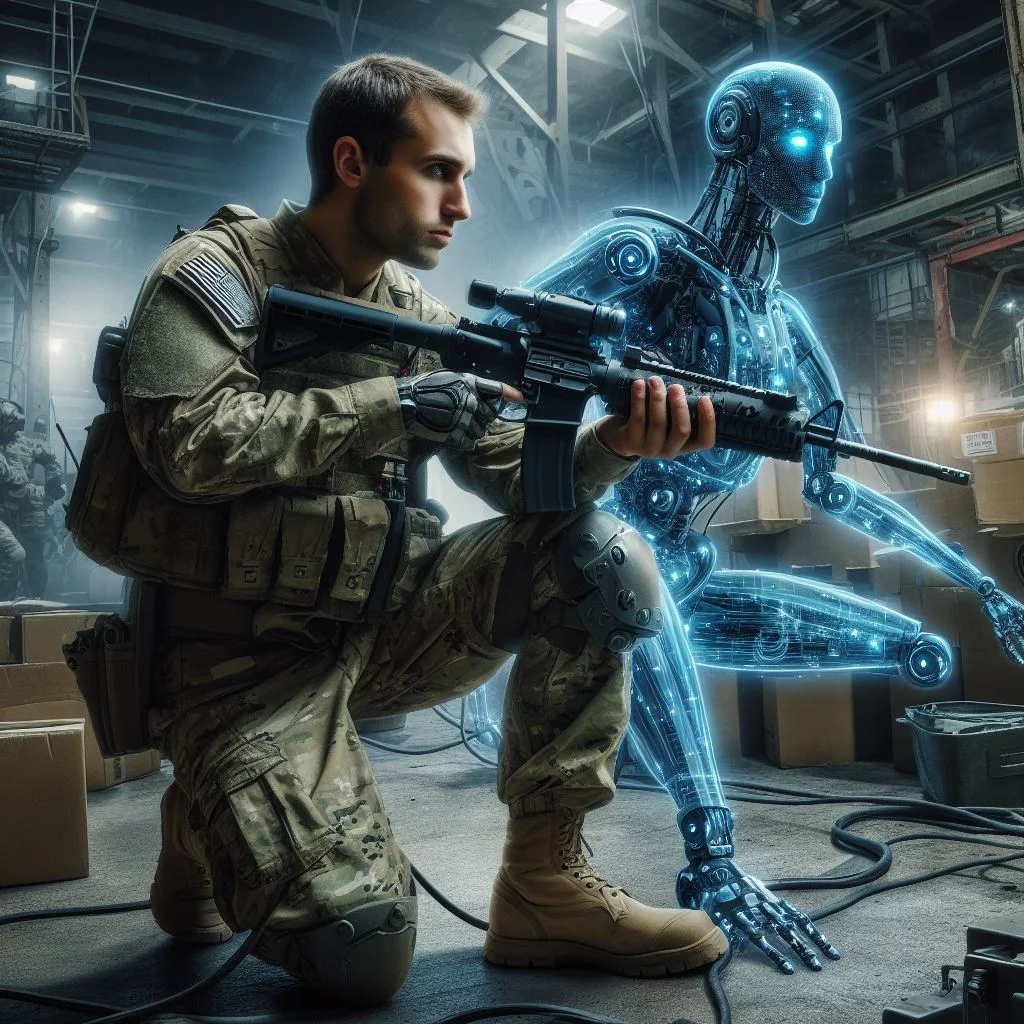The advancement of technology has brought about profound changes in numerous sectors, impacting daily life significantly. Artificial intelligence stands out as a pivotal force in reshaping various processes and approaches. Within the realm of artificial intelligence, there are both small-scale and medium-scale projects, as well as large-scale initiatives that mark significant milestones in technological progress and hold immense potential for shaping the future. These advancements extend to military operations, where artificial intelligence plays a vital role in augmenting the systems and technologies employed by armed forces.
How does the US Army use AI in modern battles?
The United States stands out as one of the countries projected to make significant investments in artificial intelligence for military purposes, leading the way with an estimated expenditure of nearly $900 billion on military affairs in 2023, as outlined in recent reports. This substantial investment fuels the advancement of cutting-edge technologies like Project Maven and unmanned aerial vehicle (UAV) leadership systems, among other applications of artificial intelligence within the U.S. armed forces. Through various applications such as intelligence analysis, strategic planning, medical diagnosis, military robotics, advanced target recognition systems, and other sophisticated technologies, the U.S. Army leverages artificial intelligence to enhance military capabilities and mitigate risks on the battlefield.
Using AI to fly drones
Unmanned aerial vehicles (UAVs) are modern tools that offer immense benefits in the context of warfare and military operations. They are characterized by their small size compared to traditional fighter aircraft, enabling them to access targets that large aircraft cannot reach. Additionally, these aircraft do not require a pilot directly commanding them in the cockpit, and they do not entail huge costs for their development and manufacture.
The United States has leveraged the application of artificial intelligence (AI) in leading UAVs, with the Kratos X-504 Valkyrie serving as a pioneering model in this direction. This aircraft is capable of flying at speeds of up to 652 miles per hour and is designed for joint operations with guided and supported aircraft. It excels in making autonomous decisions based on the nature of the assigned mission.
Identifying military targets with AI
In modern warfare, relying solely on firepower is no longer enough to ensure victory unless it's coupled with precise objectives. Advancements in targeting technology and precision-guided munitions have pushed militaries to depend on artificial intelligence for accurate target analysis.
By 2020, reports revealed that the U.S. Eighteenth Army Corps had adopted artificial intelligence programs to precisely locate targets. By February 2024, the results of 15 airstrikes conducted by the U.S. military with AI assistance showed significant success.
Executing an airstrike demands meticulous planning, thorough data collection, and careful selection of weapons and aircraft. Shuyler Moon, the Executive Director of the U.S. Central Command, emphasized that while artificial intelligence plays a vital role in streamlining operations, human oversight remains crucial for final decision-making. Ultimately, AI can ease the burden of routine and complex tasks in modern warfare.
Monitoring the health of soldiers
Naturally, the military's role transcends combat, with the U.S. military, like other organizations, confronting health challenges among its workforce. The recent emergence of the COVID-19 pandemic has posed a significant new challenge for defense innovation units. Their mission involves exploring how civilian technology can be harnessed and customized to benefit the military. Among these innovations are fitness tracking devices, such as smartwatches and Fitbits.In May 2023, the U.S. Army announced its adoption of artificial intelligence technology to analyze pandemic data and its dissemination. These algorithms were integrated into tracking devices to monitor soldiers' health and issue early warnings about infections. Jeff Schneider, director of the Rapid Threat Assessment Program, highlighted how wearing these devices can offer a comprehensive overview of an individual's health, including tracking sleep patterns and nutritional habits.
With ongoing technological advancements, artificial intelligence's capacity to safeguard the health of military personnel and the Department of Defense is continually expanding.
Detect enemies and protect allies
In risky situations like those encountered in rescue operations and military alliances, distinguishing between friends and foes becomes exceedingly challenging. The use of AI-based targeting systems is deemed crucial in such contexts. While precise data analysis remains essential during rescue missions, the capability of computers to swiftly process vast amounts of information is a boon.
When officers in the Eighteenth Corps utilized the Maven Smart System during the withdrawal from Afghanistan, they were amazed by its efficiency in tracking the movements of individuals and vehicles. This aided them in maintaining clarity amidst perilous circumstances.


.jpeg)
.jpeg)
